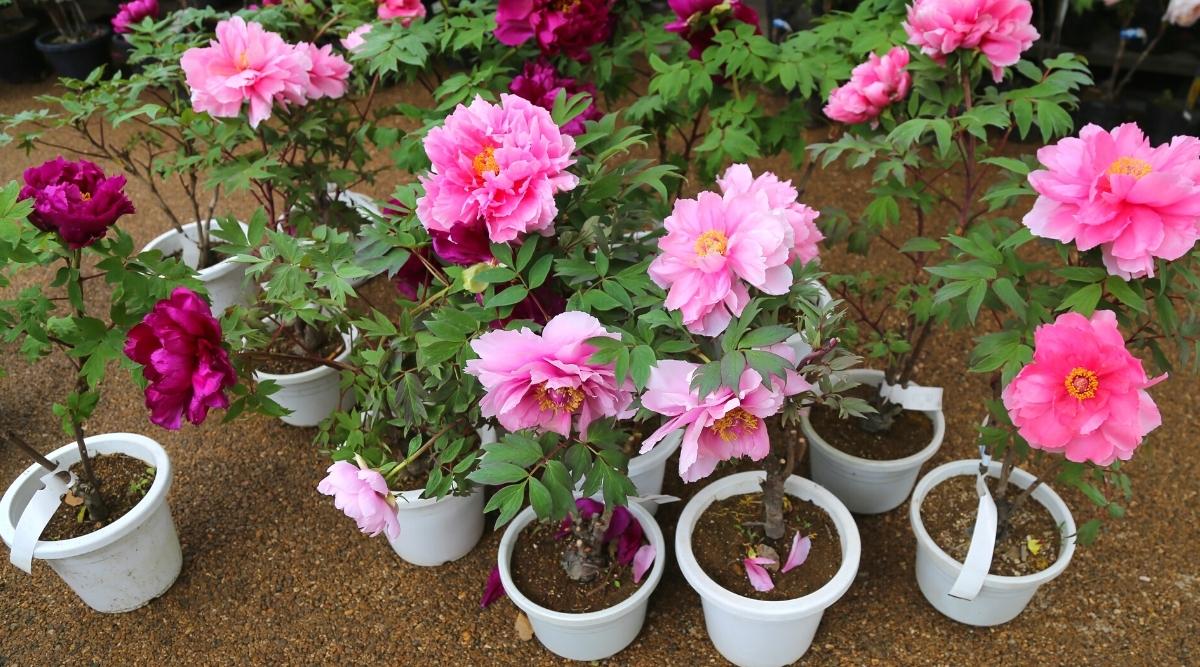Table of Contents
It is pretty sure that in a garden if peonies are planted, they will surely steal the limelight of other plants. This is because peonies are beloved flowers. For obvious reasons, these flowers leave a beautiful impact on admirers with their large, showy blooms and delightful fragrance. These plants have deep roots. Thus in order to grow peonies in pots or containers, you need to find a suitable base.
While growing these beautiful plants, you will have to deal with certain challenges, but all your effort will seem worth it when these plants bloom. They often flower the first year they have been planted, and in the second year, they increase their produce and flower size as well.
Moreover, the advantage of planting peonies in pots is that you can enjoy seeing their blossoms in the same spot for decades. In this ultimate guide to growing peonies in pots, we have mentioned several details regarding the plant and how to grow it. Let’s look up to it!
Can Peonies Grow in Pots?
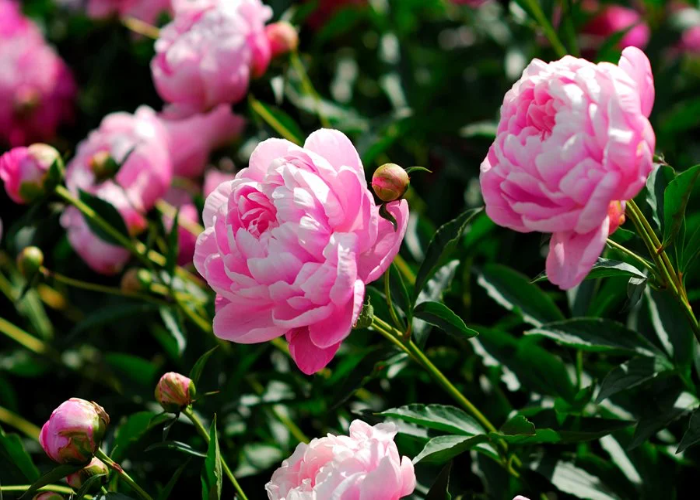
It is a controversial question as some gardeners believe it is not suitable or possible to grow these beautiful plants in pots. However, it is possible to grow peonies in pots. But you need to take extra care of these plants compared to those grown in the garden. Many bulbs and tubers do surprisingly well in containers when provided with well-draining soil and some special care. Also, you need to take care of the plant’s moisture level by taking certain measures regarding that issue.
Peonies Varieties that Thrive in Containers
Since peonies have a deep-rooted system and also expand with their growth so it is hard to imagine their growth in a limited space. There are some varieties of peonies that thrive in pots or containers. We have mentioned some of them for you:
- Paeonia Magical Mystery Tour
- Paeonia Gay Paree
- Paeonia Bartzella
- Paeonia Oslo
- Paeonia Itoh
- Paeonia Dublin
- Paeonia Border charm
- Paeonia Moscow
Choose any one of these to grow beautiful flowers in a limited space.
How to Grow Peonies in Pots/Containers
1. Choosing a Container
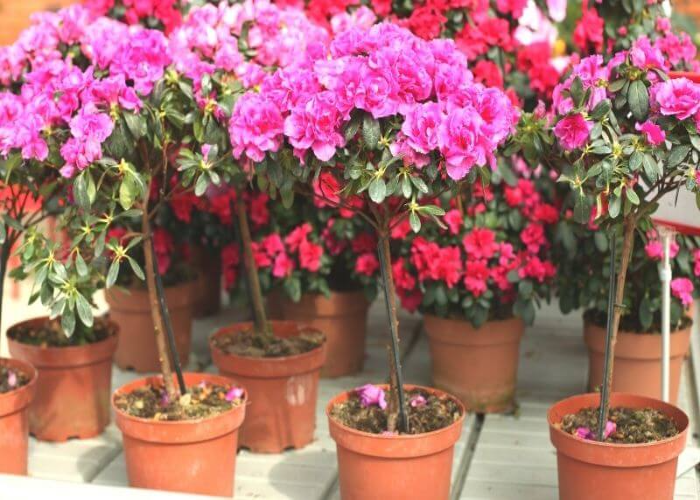
Choosing a pot or container can be a hard task for growing peonies in pots. Not every container will work for this plant. You will need an enormous container to grow this marvellous variety of plants. It is best to have a pot with at least a depth of 2 metres deep and wide. However, make sure that the pot you choose has proper drainage because a peony plant would rot if left in standing water. The container should have holes at the bottom because rocks and pebbles won’t work.
Do not use terracotta pots if you live in an area where the winters are very extreme. Containers like half whisky barrels, large plastic planters, or ones made of fibreglass would be best for the growth of the plant. Since these plants have rapid growth, therefore, you will have to change the container every 3-4 years as the roots need space to grow well.
2. Use a Proper Soil Type
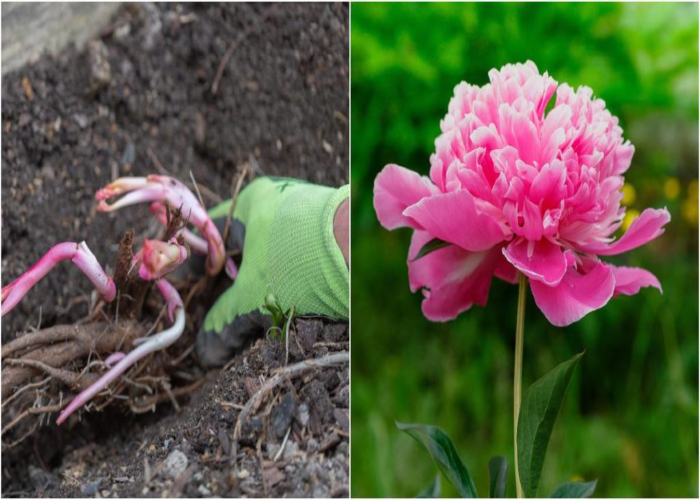
Peonies thrive in light-free, draining soil. It is necessary to provide a fertile growing medium for these plants. Thus, an all-purpose peat-free compost and to yield the best results, mix all of this with topsoil. The soil should be moist but not soggy, so ensure that to retain the moisture but do not overwater. Make sure to leave at least 2.5cm because once you water the plant, there should be enough space for it to stay above the soil, and mulch will also be provided on top. If you keep all these basic things in mind before planting your peony in pots, you will have beautiful produce.
3. Where To Plant Peonies?
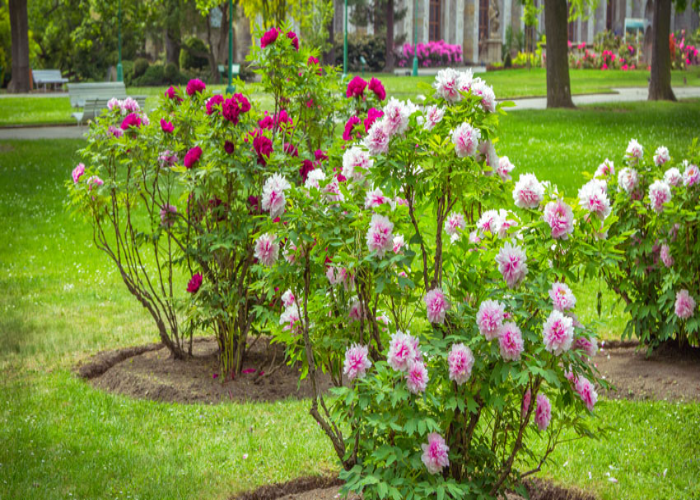
Peonies have special requirements to grow well, so finding a proper location to keep your potted plants becomes necessary.
- Peonies are perennial plants. Thus, they require full sun for a day or at least half a day. Peony plants can tolerate a bit of shade and also allow more intense colouring. However, too much shade can produce foliage and very less bloom.
- If you are planting your plant in pots or containers, you need to plant it in an enormous container of 10-15 gallons or larger. Also, remember that it has adequate drainage and to water more frequently.
- Peonies can adapt to a variety of soil types but actually love well-drained clay soil if you want to improve your nutrients/organic matter.
Make sure to keep your potted plants in a space where you meet all the above requirements.
How to Plant Peonies?
In nurseries, these peonies are available as a bare-root. Thus they are planted with these roots, and in some cases, it is repotted after the fall. Moreover, it is important to plant peonies in pots at the right depth is important. Further, we have mentioned some steps below to grow peonies.
- Dig a hole for about 15 x 15 inches, then fill the hole back in with the soil. Remove enough soil to place the root properly in the hole.
- Place the root of the plant downward at any angle, keeping the bud upward. Do not plant the roots too deeply. It should be just one or two inches below the ground level.
- Peonies can be grown in warmer locations as well.
- Some varieties of peonies, such as Itoh peonies, have extra large roots with some of their buds or eyes on a woody stem. These varieties have to be planted deeper than other herbaceous peonies.
- Water well at the time or plantation. Also, make sure to water them every week or two to provide enough moisture.
- If your root is planted too deep, then check it by gently lifting it and placing soil beneath the root. Planting peonies too deep can result in foliage growth and no flowers.
- Newly planted bare roots peonies will establish feeder roots after you plant them in winter. Peonies are more prone to cold weather.
- Planting peonies in pots requires adequate drainage. Keep in mind to water them regularly and do not let them dry.
- Add mulch after planting with organic matter that is well-rotted. Homemade compost or well-rotted manure will also help the plant to thrive.
How to Care for Peony Plants
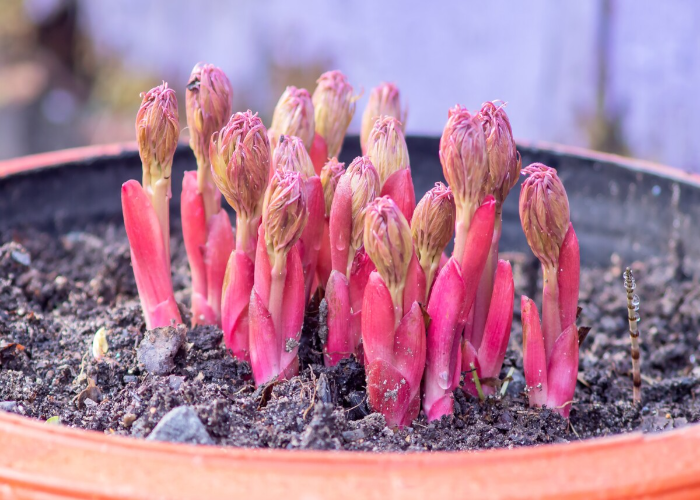
This is a tricky task as these perennial plants require much more care than other plants. However, you can ease it once you learn how to take care of it. Keep the following tips in mind, and your pot of happiness should excel with the care that you provide:
1. Support
These plants yield beautiful flowers, and some of these plants benefit from staking. This is because their beautiful flowers are always larger in size. Thus they sometimes struggle to hold these up without any support. Providing external support and helping the plant stand firmly.
2. Fertilising
Feeding a new plant is a very important part of caring for it. Thus it is necessary to provide the plant with organic mulch or any other organic fertiliser which is good in quality. Most gardeners suggest applying a fertiliser with 10-4-18 NPK.Moreover, it is also considered beneficial to provide plants with fertiliser after the flowering season. However, the best method is to make your own compost with organic matter and teas, and this will surely give a good yield of peonies.
3. Watering
In the first year, these plants require regular watering in dry weather to establish their roots. However, if you are growing peonies in pots, then it is more to happen that your plant will require more water since containers dry out more quickly. Keep your growing medium moist in order to have good produce.
4. Pruning
You can prune the dead plants as most of the peonies are hybrids and do not provide seeds for the next growth. So the plant is not harmed if you remove the dead plants. Since the peony flowers die in autumn so the only suitable option is to cut the foliage short up to the ground level. This will benefit the plant as it would reduce the risk of the peony wilt or catching any disease, such as fungal infection.
Winter Care for Peonies Plant
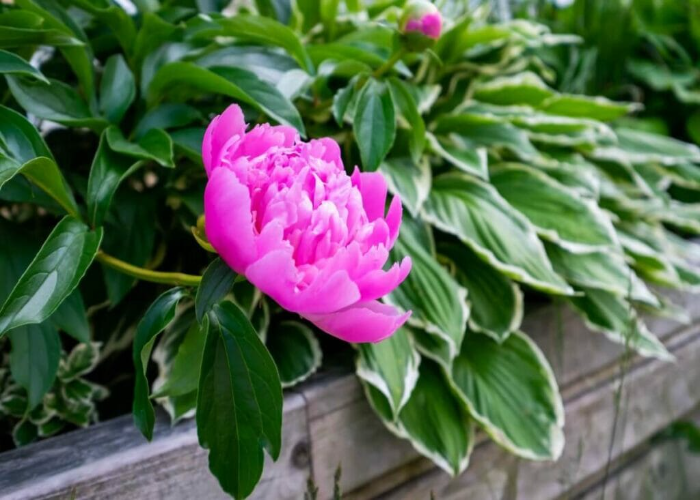
In winter, it becomes necessary to leave the tubers in the ground. This is the case when you grow these in the garden. If you are growing peonies in pots, then you need to take care of them as they are vulnerable to freezing. They are more prone to get the problem of waterlogging during the fall. If you do not want to unearth the tubers, then the best thing you can do is to insulate the pot by wrapping it sideways and mulch from the top.
You can also group the pots in clusters and place them near strong things like stone or brick walls to have a thermal mass that will help them get warmth in freezing temperatures. Also, place the container undercover to get rid of the waterlogging problems. Otherwise, the plant can have the rotting of the roots.
Division of Peonies
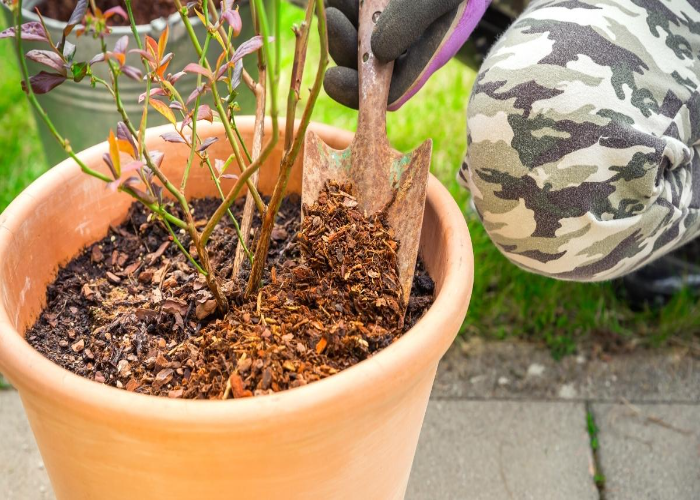
These plants live a long life and also have rapid growth. For so many years, they can be clustered in their roots, so you can divide the mature peonies in the season when the leaves have withered. Further, you can split your plant and re-pot parts into smaller pots to grow a whole new plant from it. This will help increase the blossoms.
Summing It Up!
In this ultimate guide to growing peonies in pots, you have got a better understanding of these beautiful species. However, we have given you all the tips and tricks to grow peonies. All you need to do is to follow all the instructions properly. Do forget to water the plants well after planting them but do not overwater these flowers as they will get waterlogged and rot the roots.
Moreover, growing peonies in pots is a bit tricky task, but you will be satisfied once these plants bloom. Moreover, just make sure to keep your potted peonies in sunlight as they grow well in sunlight. Rest, take your gardening equipment, and plant your pot of happiness.

